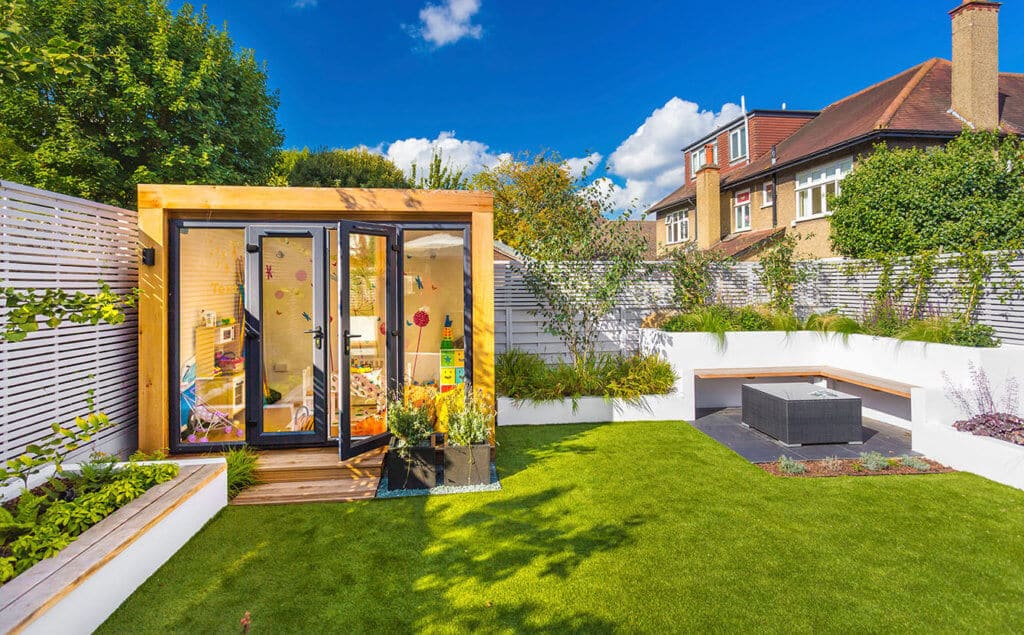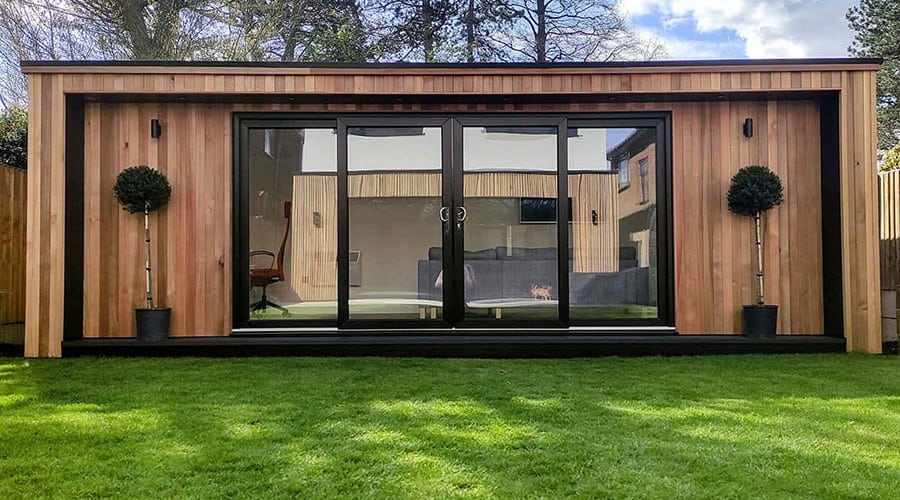Free Info For Planning Permission For Garden Summer Houses
Free Info For Planning Permission For Garden Summer Houses
Blog Article
What Is The Permission For Planning Required For Garden Rooms As Well As Other Modifications To The Use Of Space?
When constructing garden rooms, conservatories, outhouses, garden offices, or extensions, the concept of "change of use" plays an important role in determining if planning permission is required. These are the key factors to be considered when applying for permission to plan for a change of usage:
In most cases planning permission is required to transform non-residential structures (such as garages and agricultural buildings) into residential spaces or garden offices. This is due to the fact that there will be a change in the use class.
Garden Rooms as Living Space:
A room that is used in the garden as an independent living space (e.g. guest house, rental unit) is considered a change in the usage. In order to ensure that the building is compliant with all rules and regulations for homes Planning permission is required.
Business Use
You may need permission to plan to use a garden room or conservatory to serve as a business space for example, an office or place of business with frequent employees or visitors. This is due to the potential impact on the surrounding neighborhood, which includes traffic and noise as well as parking.
Educational or Community Use:
To transform the garden building you have in place to a space for learning or other community-based activities (such as classrooms or meeting rooms) You will also require planning permission. Local authorities will evaluate whether the property is suitable for use and what impact it may have on the area.
Impact on local infrastructure
In general, any alteration in usage that has an impact on local infrastructure (such as roads, drainage or public services) will require planning approval. The decision will be made by the local planning authority during the application process.
Dual Use
For properties with mixed uses (e.g., residential and commercial), a permit for planning is typically needed to clearly define the different uses.
More footfall, traffic and revenue:
Planning permission could be required depending on whether the new use will likely increase pedestrian or vehicular traffic (e.g. the conversion of the garden into a retail space). This is in order to mitigate any potential impact on the locality.
Regulations for Building Regulations In compliance:
Although it's not an issue of planning however, any modifications to the use must be in line with construction codes to ensure the highest standards of safety, energy efficiency, and health. It is particularly important to convert spaces into living spaces.
Environmental Impact:
Changes in use that may negatively impact the environment, for example the conversion of agricultural land to residential development, require planning approval. A planning application may include an environmental evaluation.
Community and Amenity Effect
One of the most important aspects to consider is the impact of the plan on the local population and its character. For example, turning the garden space into a cafe will require approval from the planning department to ensure that it aligns with community plans and safeguards local amenities.
The following regions are classified as:
In designated areas like conservation zones, National Parks, or Areas of Outstanding Natural Beauty (AONB), changes of use are subject to stricter controls to preserve the character and beauty of the place. This is the reason why the need for planning permission is required.
Local Planning Policy:
Local planning authorities typically have strict policies regarding modifications to usage. These can be quite different. It is important to review these policies to know which types of changes are permitted and what requirements need to be met.
In essence the typical planning permit is needed for any significant modification to the use of a garden room conservatory outhouse, garden office or extension. This ensures that the new usage is suitable for the location, in line with national and local policies, and address any potential impact on the community or environment. Contacting your local planning authority early in the process of planning is crucial to establish the precise needs and get the required approvals. See the recommended modern garden room for blog examples including garden rooms brookmans park, costco garden room, how to lay decking on soil, outhouse building, best electric heater for cabin, garden office hertfordshire, outhouse for garden, costco outhouse, ground screws vs concrete base, Tring garden rooms and more.
Concerning Listed Buildings What Kind Of Planning Permit Are You Required To Apply For Garden Rooms, Etc?
Certain considerations and rules are required when creating conservatories, garden rooms or outhouses on the property of a listed building. These are the most important details regarding planning permission for such projects The Listed Building Consent:
In addition to the need for the planning approval, any alteration or extension within the boundaries of a building that is historic requires listed-building permission. It is vital to be aware that changes may affect the character of a listed property.
Impact on Historical Character:
Planning permission is required for any new construction or extension that may alter the historical character or appearance of the listed building or its setting. This includes outbuildings and gardens rooms.
Design and Materials
The structure as well as its materials should be in line with the architectural and historical importance of the listed building. It may be required to utilize traditional materials or bespoke designs, which may require permission for the design.
Distance from the listed Building
New constructions built near heritage sites are inspected to determine their effect on setting and aesthetics. To ensure that they don't detract the character of the structure the building, planning permission is required.
Size and Scale
The scale and size should be proportional and compatible with the structure listed. Planning permission and specific evaluations are more likely for larger structures.
Location:
The location (whether it is in the front, behind, or to the side of the listed structure) can influence the need for a planning permit. The visible locations, or those which impact the view of the structure need to be evaluated more thoroughly.
Changes within the company:
If the structure being built is detached from the existing building and any modifications made to it (such as adding new access points), will also need approval for planning and listed building permits.
Conservation Areas Overlap
If the listed building is located in a conservation zone, additional restrictions apply. To ensure compliance with listed building regulations and conservation area regulations, planning permission is needed.
Use of the building:
The location of an outbuilding, or a gardenroom can affect the need to obtain a permit for planning. Uses that involve a significant shift, such a commercial or residential use, are scrutinized more closely.
Structure:
Any construction that could compromise the structural integrity of listed buildings require approval for planning and listed-building permission. This is to ensure that the old and new structures can be properly integrated.
Local Authority Guidelines
Local authorities usually have their own guidelines regarding listed buildings that outline the kind and amount of construction and modifications that is permitted. Planning permission is required to ensure these guidelines are followed.
Professional Assessments
Plans for the renovation of listed buildings typically require extensive evaluations by conservation experts. These assessments help determine whether the proposed changes are appropriate and to support the application for planning approval.
In summary It is generally required to get planning permission and listed construction approval for any extensions, garden rooms or conservatories, as well outhouses or conservatories attached to listed structures. It is important to consult with your local authority and heritage professionals as early as possible in the planning phase to ensure that you are in compliance and protect the structural and historical integrity of your property. Check out the most popular costco garden buildings for website examples including best electric heater for cabin, garden out house, luxury outhouse, outhouse garden rooms, garden room or extension, out house for garden, garden room heater, gym outhouse, do i need planning permission for a garden room with toilet, garden office and more.
What Planning Permits Are Needed For Garden Rooms, Etc. With Regard To Appearance And Design?
In deciding whether or not to get permission to designate garden rooms or outhouses, conservatories, and other structures as well as extensions or gardens it is essential to take into consideration the design of the building. Here are the key factors to consider: Comply with Permitted Development Rights:
Planning permission might not be necessary if you are able to construct the structure within permitted development rights of your property. There are however specific design and style requirements that must be met.
Size and Scale
The dimensions and size of the new building should be proportional to the existing structure and the structures that surround it. Planning permission is required for structures that are larger than the limits stipulated in the permitted development rights.
Height and Mass:
The dimensions of existing structures and properties adjacent to them should be represented in the height and massing. Planning permits are often required for structures that go over the height limits or are incompatible to the surrounding area.
Materials and Finishes:
The finishes and materials chosen should compliment the property and the buildings around it. If the materials proposed do not match the character and appearance of the area the planning approval may be needed.
Design Harmony
The design of the proposed structure should be compatible with the architectural style that is in place. Planning permission is necessary in the event that the proposed design is not in harmony with the local style and character.
Roof Design:
The design of your roof should be in harmony with the architecture of the property you're renovating as well as the buildings around it. The proposed roof design may require permission to plan if it's not compatible with the local style and the character.
Fenestration:
The design and location of windows and doors should be in harmony with the surroundings. The proposed fenestration could require planning approval if it's not conforming to the local style and appearance.
Facade Treatment
The exterior treatment must be in harmony with existing properties and buildings. The proposed facade design may require approval from the planning department if it's out of character with the surrounding buildings.
Landscaping and Surroundings
The landscaping of the new structure will be in harmony with the existing structures and the property. If the landscaping proposed is not in keeping with the neighborhood, then planning permission might be required.
Visual Impact
The visual impact to the surrounding area of the proposed structure should be kept to a minimum. The proposed structure might require planning permission if it has an adverse aesthetic impact on its surroundings.
Heritage and Conservation Areas
The criteria for design and appearance may be more stringent in the case of a property that is in a heritage conservation area. A permit for planning could be required for the construction of structures that meet the requirements.
Guidelines for Architectural and Planning
Local planning authorities typically have their own design and style guidelines to be adhered to. Planning permission could be required if the proposed building is not in line with these guidelines.
In the end, the style and aesthetics of a structure can determine whether or not planning permission is granted. Check with the local authority for planning at the earliest possible point during the planning stage to ensure that the design adheres to local character and aesthetic guidelines, and to determine the need for planning permission. See the top rated electrics to summer house for blog tips including how to get power to a garden room, herts garden rooms, garden room heater, composite summer house, luxury outhouse, how to get power to a garden room, garden rooms hertfordshire, my outhouse, garden room or extension, how to lay decking on soil and more.